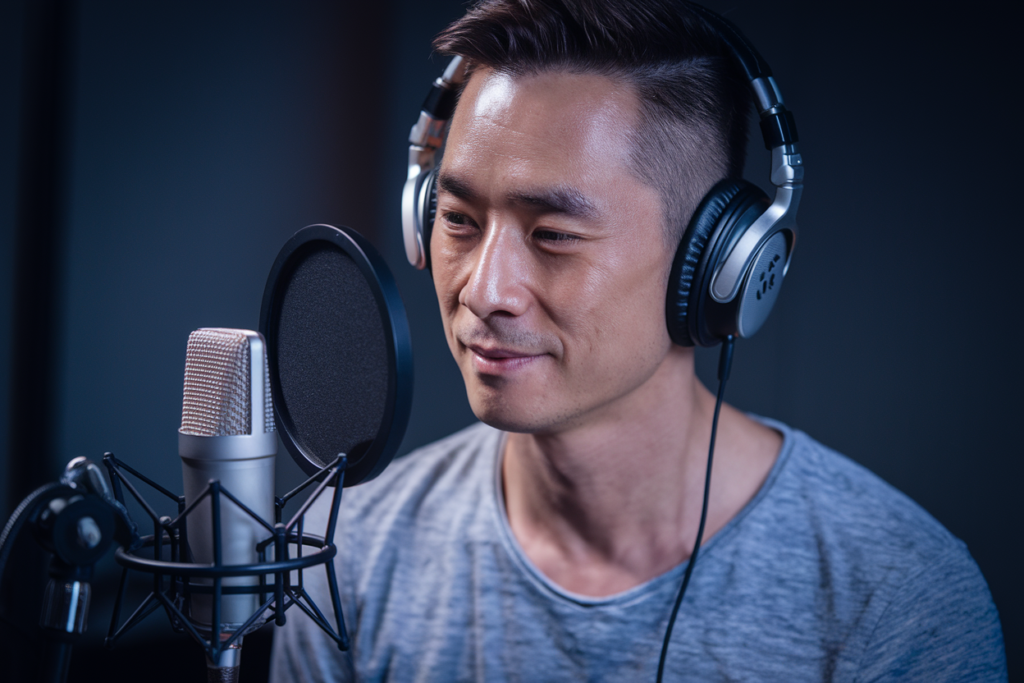Key Takeaways
- Importance of Voice Talent: Selecting the right voice actor is crucial for conveying emotion and ensuring relatability in Chinese dubbing, with different projects requiring distinct vocal qualities.
- Cultural Nuances Matter: Understanding cultural context and idiomatic expressions is essential for script adaptation to maintain authenticity and enhance audience engagement.
- Collaboration is Key: Effective communication between directors and voice artists significantly improves the quality of dubbing, ensuring that character emotions are effectively conveyed.
- Professional Recording Environment: Utilizing professional studios minimizes distractions, leading to higher sound quality and better overall production value in dubbed content.
- Post-production Enhancements: Investing time in thorough post-production work can polish your product by removing mistakes or awkward pauses, creating a seamless listening experience.
- Technological Advancements: Leveraging advanced recording equipment and digital editing tools can greatly enhance dubbing results, providing clarity and depth to the final audio output.
Ever wondered how to make your Chinese voice dubbing stand out in a sea of content? In today’s global market, the right voice can elevate your project from ordinary to extraordinary. Whether you’re working on an animated series or a corporate video, optimizing your dubbing process is crucial for capturing attention and conveying emotion.
Understanding Voice Dubbing
Voice dubbing involves replacing the original audio of a video with a new voice track in another language. This process allows you to reach diverse audiences while maintaining the emotional depth and context of your content. Selecting the right voice talent is crucial, as their performance can significantly influence how viewers perceive your project.
When choosing a voice actor for Chinese dubbing, consider qualities such as tone, clarity, and expressiveness. Each project demands different characteristics from its voice artist—animated series often require energetic performances, while corporate videos may call for a more professional sound.
Collaboration between directors and voice artists plays an essential role in effective dubbing. Clear communication about character emotions or brand messaging helps ensure that the final product resonates with your audience. Using skilled voice over talent who understands cultural nuances enhances authenticity.
The recording environment also impacts quality; using professional studios ensures optimal sound capture without distractions or background noise. Additionally, proper mixing techniques balance the new audio with existing sound effects and music tracks.
Invest in thorough post-production work to polish your dubbed content further. Editing out mistakes or awkward pauses creates a seamless listening experience that keeps viewers engaged from start to finish.
Importance Of Chinese Voice Dubbing
Chinese voice dubbing plays a vital role in making content relatable and engaging for diverse audiences. A well-executed dubbing process can transform animated series, films, or corporate videos into something that resonates deeply with viewers.
Cultural Nuances
Cultural nuances shape how characters are perceived in different regions. Selecting the right voice artist who understands these subtleties is essential. Voice talent must convey not only words but also emotions reflective of cultural contexts. For instance, humor may translate differently across cultures, so a voice actor needs to adapt their delivery accordingly. This understanding enriches the viewer’s experience and fosters connection.
Audience Engagement
Capturing attention requires more than just quality visuals; it involves an emotional connection through sound. Effective voiceovers enhance storytelling by bringing characters to life and adding depth to narratives. Engaging your audience means choosing voice over talent that matches the project’s tone and intent perfectly. The performance of a skilled voice over artist can elevate mundane dialogue into captivating exchanges that hold viewers’ interest from start to finish.
By optimizing these elements in Chinese voice dubbing, you create content that’s not only accessible but also memorable for your audience.
Techniques For Optimizing Chinese Voice Dubbing
Optimizing Chinese voice dubbing involves several key techniques that enhance the overall quality and effectiveness of your projects.
Selecting Appropriate Voice Talent
Selecting the right voice talent is crucial. You want a voice artist whose tone, clarity, and expressiveness align with your project’s needs. Different genres require different qualities; for instance, an animated series might benefit from a more playful voice actor, while corporate videos often need someone with a professional demeanor. Always consider the character’s personality and emotional range when choosing your voice over talent. A well-chosen voice can breathe life into characters and resonate deeply with audiences.
Script Adaptation Strategies
Adapting scripts effectively ensures cultural relevance in your dubbing process. It’s not just about translating words; it’s about conveying meaning and emotion as well. Use idiomatic expressions familiar to Chinese audiences to make dialogues relatable. Maintain the original script’s intent while allowing flexibility for cultural nuances. Collaborating closely with translators who understand both languages helps fine-tune scripts for natural flow and clarity, resulting in engaging voiceovers that connect with viewers on a personal level.
Utilizing Advanced Technology
Utilizing advanced technology plays a vital role in achieving high-quality dubbing results. Invest in professional recording equipment to capture clear audio without background noise or interference. Tools like digital sound editing software allow you to refine performances during post-production easily—balancing levels, removing imperfections, and enhancing vocal characteristics can elevate the final product significantly. Incorporating AI-driven tools for voice modulation may also provide unique opportunities to create diverse character voices while maintaining authenticity.
By focusing on these techniques—selecting appropriate voice talent, adapting scripts thoughtfully, and leveraging technology—you’ll optimize your Chinese voice dubbing projects effectively, ensuring they stand out in today’s competitive landscape.
Challenges In Chinese Voice Dubbing
Chinese voice dubbing presents unique challenges that can impact the overall quality of your project. Understanding these hurdles is essential for creating an engaging and authentic experience.
Language Barrier Issues
Language differences create significant hurdles in voice dubbing. Translating scripts isn’t just about swapping words; it requires a deep understanding of cultural context to ensure the message resonates with the audience. If translations miss idiomatic expressions or nuances, meaning can get lost, leading to disconnection with viewers. It’s crucial to employ skilled voice artists who grasp both languages and cultures, as their insights help bridge this gap. Without this expertise, you risk producing voiceovers that feel flat or out of touch.
Maintaining Authenticity
Maintaining authenticity during Chinese voice dubbing poses another challenge. Viewers expect characters to sound natural and relatable, which demands careful consideration when selecting voice talent. The right voice actor should embody the character’s personality while also reflecting cultural attributes that resonate with local audiences. If your choice misses the mark, it compromises emotional engagement and viewer immersion. Therefore, aligning casting decisions with project goals ensures that your final product feels genuine and impactful.
By addressing these challenges head-on—through thoughtful script adaptation and strategic selection of talented artists—you enhance your chances of achieving high-quality Chinese voice dubbing that captures attention and remains memorable for viewers.
Conclusion
Optimizing Chinese voice dubbing is essential for creating impactful and relatable content. By selecting the right voice talent and ensuring cultural relevance in your scripts, you can significantly enhance viewer engagement.
Pay attention to the recording environment and post-production techniques to achieve high-quality sound that resonates with your audience. Remember that understanding cultural nuances will help you connect emotionally with diverse viewers.
As you refine your approach to voice dubbing, you’ll find that a well-executed project not only captures attention but also leaves a lasting impression. With these strategies in place, your projects will stand out in today’s competitive landscape.
Frequently Asked Questions
What is Chinese voice dubbing?
Chinese voice dubbing involves replacing the original audio in a video with a new voice track in Chinese. This process allows creators to reach a wider audience while maintaining the emotional depth of the content.
Why is selecting the right voice talent important?
Choosing the right voice talent is crucial because their tone, clarity, and expressiveness must match the project’s needs. The right voice enhances character portrayal and ensures effective communication of emotions.
How can script adaptation improve dubbing quality?
Script adaptation goes beyond translation by ensuring cultural relevance and emotional resonance. It captures idiomatic expressions and nuances that make the dialogue relatable to Chinese audiences, improving overall engagement.
What role does collaboration play in dubbing projects?
Collaboration between directors and voice artists is essential for successful dubbing. Clear communication about emotions, character traits, and brand messaging ensures that all elements align, resulting in a cohesive final product.
How does technology enhance Chinese voice dubbing?
Advanced recording equipment and digital editing tools significantly improve sound quality during production. These technologies help capture high-quality audio and facilitate seamless post-production work for optimal viewer experience.
What challenges exist in Chinese voice dubbing?
Challenges include language barriers and maintaining authenticity during translation. Understanding cultural context is vital to ensure messages resonate with audiences without losing meaning or emotional impact.
Why are cultural nuances important in dubbing?
Cultural nuances shape how characters are perceived across different regions. Voice artists must convey these subtleties to create an emotional connection with viewers, making content more relatable and engaging.
How can creators optimize their Japanese voice dubbing projects?
Creators can optimize their projects by carefully selecting appropriate voice talent, adapting scripts for cultural relevance, utilizing advanced technology for sound quality, and ensuring thorough post-production processes are followed.







